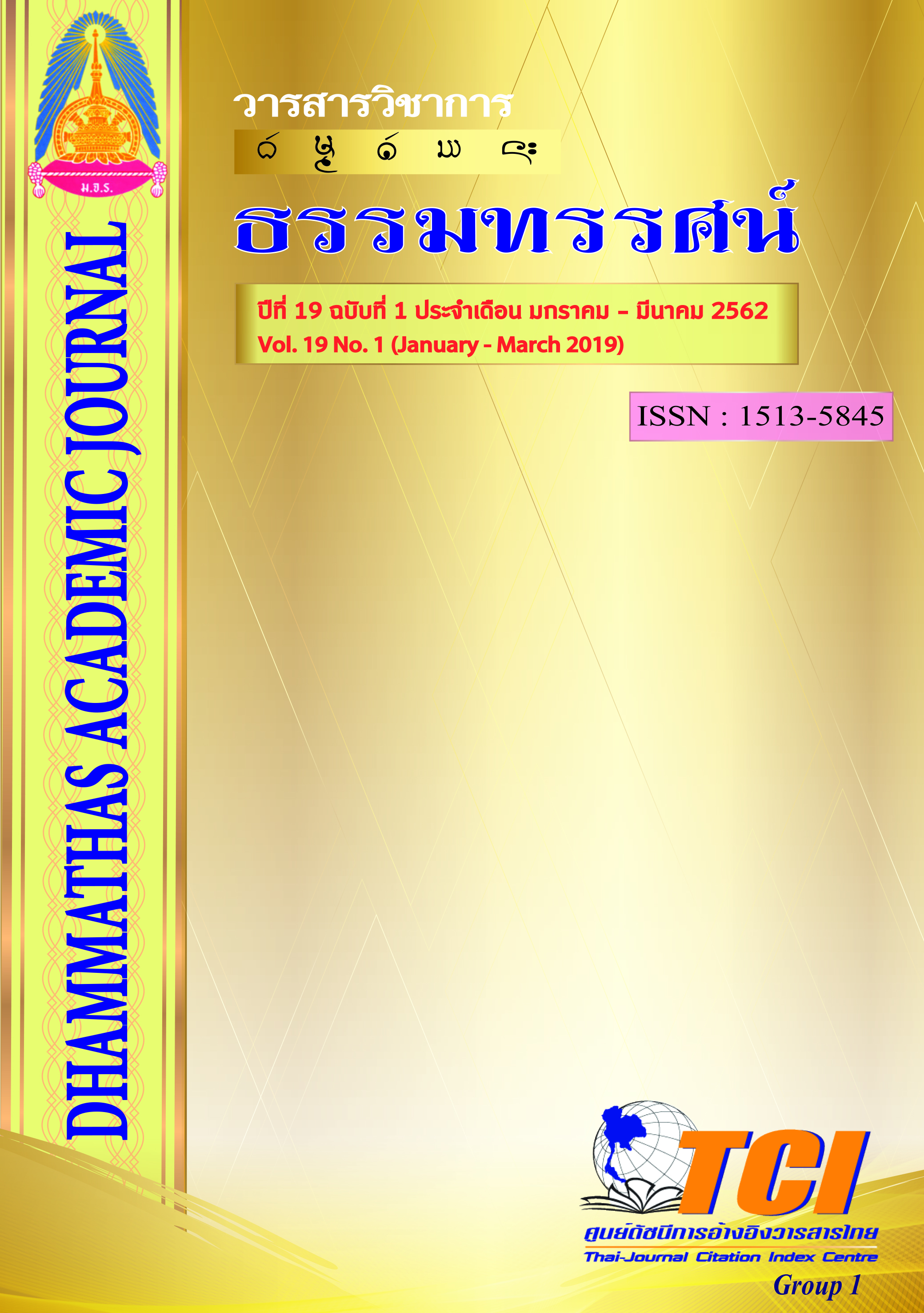Enhancing the Bead Trading Community’s Right Livelihood in Surin Province
Main Article Content
Abstract
The objectives of this research are: 1) to study the concept of life according to Buddhist principles, 2) to study the pattern and process of enhancing the life principles of the merchant community in Surin province, 3) to analyze the pattern and process of enhancing the life principles of the merchant community in Surin province. The careers of the people especially in the agricultural sectors became the risks that were caused from by the traditional careers, such as the same crops in every village and every sub-district, the recession of the products’ prices, no jobs or incomes after the production season, and a small group gathering of careers. The development of community economy put the emphasis on creating the learning processes for people in the local community. It became the development process rather than the model and it was necessary to keep practicing. It also focused on the development based on the local resources. The community’s right livelihood referred to the community where people were engaged in their right living to gain more incomes than expenditures, to increase income savings, and to reduce harmfulness to oneself, others, and environments. Owing to the living of the people in the community, it needed to be consistent with the ways of the community for the purpose of creating the system of foundation economy in the community.
The findings of this research revealed that: the community’s right livelihood was the living under the scopes of Ariyamagga or the noble paths, consisting of Sammadithi or the right views to guide the livelihood. The principles of the right livelihood referred to being harmlessness to oneself, others, and environments, upholding the justice to the society, getting incomes rather than expenditures, and so on. Enhancing the community’s right livelihood referred to the creation of the product models that have its own identity or unique and new brands as follows: Beads or Prakuam referred to the silver or gold beads with round types weaved together into ornaments, such as necklaces, bracelets, belts, earrings and so on. If made with silver, they were called silver beads. If done with gold, they were called gold beads. There were special features of Surin’s beads with emphasis on the arts of many different designs, and the beads were mostly found in black because after designing the beads, the craftsmen blackened them in order to make the patterns more prominent. The beauty of Surin’s beads was on the outside patterns and the glitter of silver metal. The villages making the beads consisted of Ban Chok, Ban Khwaosinrin, and Ban Sador, Khwaosinrin sub-district, Khwaosinrin district, which had been the villages of arts and crafts, jewelry or beads more than 500 years ago, and almost every village in Khwaosinrin district mainly gained incomes from the production and distribution of beads.
Currently, Surin’s women wear jewelry more than Surin’s men do. The dresses of Surin’s women are silk and silver bead jewelry. The slogan also says, “Wear silk dress and wear beads”. At present, the dresses of Surin’s people in the ceremonies are silk, silver jewelry, such as the ordination ceremony, wedding, and other traditions. Currently, Surin’s women wear jewelry more than Surin’s men do. The dresses of Surin’s women are silk and silver bead jewelry. The slogan also says, “Wear silk dress and wear beads”. At present, the dresses of Surin’s people in the ceremonies are silk, silver jewelry, such as the ordination ceremony, wedding, and other traditions.

